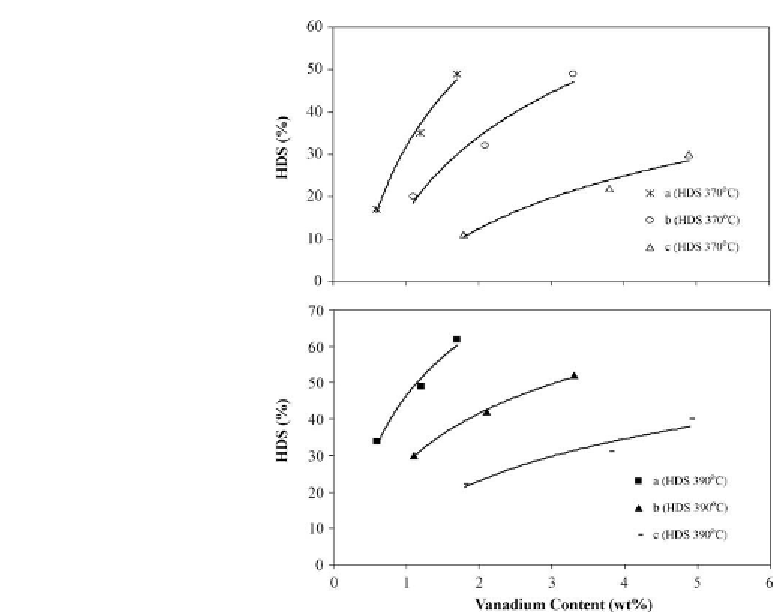Environmental Engineering Reference
In-Depth Information
Figure 9.7: Effect of V content of catalysts reprocessed from coked spent catalysts (a: catalyst A;
b: catalyst B; c: catalyst C) on hydrodesulfurization (HDS) activity at 370 and 390
C [From
ref.
522
. Reprinted with permission].
120 A. The performance of the catalyst for residual oil hydroprocessing was found to be
roughly equal to that of a commercial catalyst.
9.1.1.3 Effect of Hydrothermal Treatment on Reprocessed Catalysts
The activity of the reprocessed catalysts can be significantly enhanced by subjecting spent
hydroprocessing catalysts to hydrothermal treatment at 300
◦
C for 2 h
[524]
. The pore volume
and pore size distribution of the spent catalysts before and after hydrothermal treatment are
compared in
Fig. 9.9
. It is seen that the pore volume after hydrothermal treatment increased
from 0.24 to 0.48 mL/g, whereas surface area increased from 37 to 70 m
2
/g. The volume of
pores in the 100-2000 A diameter range increased from 0.16 to 0.38 mL/g, while the mesopore
volume in the 100-500 A increased from 0.12 to 0.24 mL/g.
A hydrothermally treated spent catalyst was used to prepare reprocessed catalysts using
boehmite in similar manner as described above (
Fig. 9.1
), i.e., 20, 40, and 60 wt.% of the








